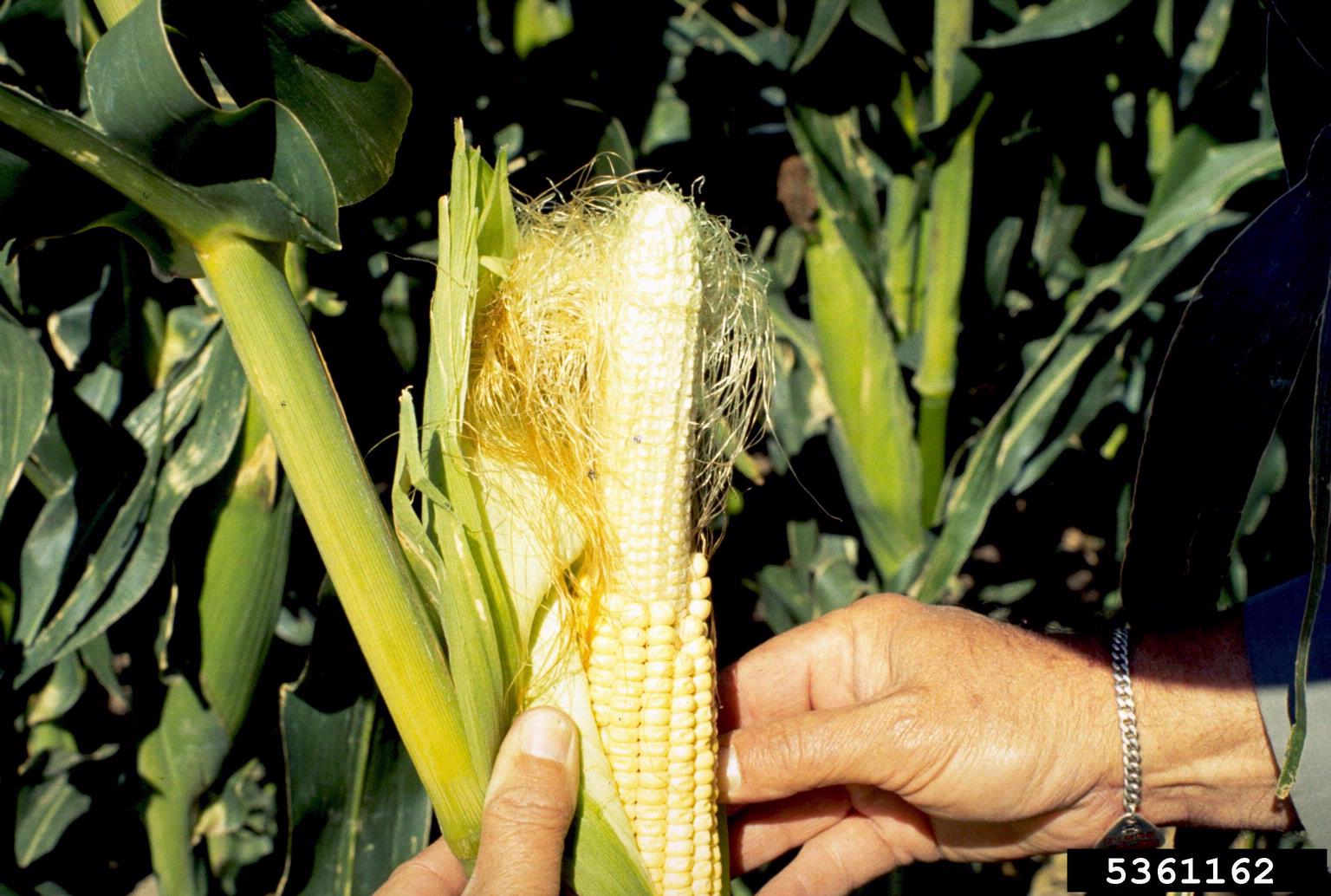No Ears On Corn Stalks: Why Is My Corn Not Producing Ears

We're growing corn this year and it's sort of awe-inspiring. I swear I can practically see it growing right before my eyes. As with everything we grow, we hope the outcome will be some juicy, sweet corn for late summer BBQs, but I've had some problems in the past, and maybe you have too. Have you ever grown corn plants without ears?
Why is My Corn Not Producing Ears?
A corn plant not producing could be the result of climate changes, disease, or insect problems that are affecting the plant's ability to pollinate properly, which may cause it to not be forming healthy ears or any ears at all. To fully answer the question, “Why is my corn not producing ears,” a lesson in corn reproduction is in order. Corn plants produce individual male and female flowers, both of which start out as bisexual. During the flower's development, the female traits (gynoecia) of the male flowers and male features (stamens) of the developing female flower terminate. The end result is a tassel, which is male, and an ear, which is female. Silks that emerge from the ear are the stigma of the female corn flower. Pollen from the male flower adheres to the end of the silk, which grows a pollen tube down the length of the stigma to reach the ovary. It's basic 101 corn sex. Without proper production of silk or sufficient pollination, the plant won't produce kernels, but what causes the plant to produce no ears of corn at all? Here are the most probable reasons:
- Poor irrigation - One reason corn plants are not producing ears has to do with irrigation. Corn has shallow roots, and is, therefore, susceptible to lack of water. Drought stress is usually indicated by leaf roll along with a change in the hue of the leaves. Also, too much irrigation can wash off pollen and affect the plant's ability to grow ears.
- Diseases - Secondly, diseases such as bacterial wilt, root and stalk rots, and viral or fungal diseases can all result in no ears on corn stalks. Always buy inoculated, clean seed from reputable nurseries and practice crop rotation.
- Pests - Nematodes may also infect soil surrounding the roots. These microscopic worms feed on the roots and disrupt their ability to absorb nutrients and water.
- Fertilization - Also, the amount of nitrogen available to it affects the plant by fostering foliage growth, resulting in no ears of corn on the corn stalks. If limited nitrogen is available, the plant needs lots of calcium and potassium in order to produce ears.
- Spacing - Lastly, one of the most common reasons for no ears of corn on corn stalks is space. Corn plants should be planted in groups 4 feet (1 m.) long with at least four rows. Corn relies on the wind to pollinate, so the plants need to be close enough together when they tassel to fertilize, otherwise, hand pollination of corn may be necessary.
Gardening tips, videos, info and more delivered right to your inbox!
Sign up for the Gardening Know How newsletter today and receive a free copy of our e-book "How to Grow Delicious Tomatoes".

Amy Grant has been gardening for 30 years and writing for 15. A professional chef and caterer, Amy's area of expertise is culinary gardening.
-
 Looking For Plants To Give You The Soft And Fuzzies? Try These 5 Fuzzy Leaf Plant Options
Looking For Plants To Give You The Soft And Fuzzies? Try These 5 Fuzzy Leaf Plant OptionsLovers of texture, drama, silver foliage and tactile plants will adore these special sensory garden additions. These fuzzy leaf plant options will leave you all aglow
By Susan Albert
-
 Get Ready For A Summer Of Hummers! Grow These Full Sun Hummingbird Plants and Flowers
Get Ready For A Summer Of Hummers! Grow These Full Sun Hummingbird Plants and FlowersIf you’re lucky enough to enjoy a sunny backyard, make sure you are maxing out on your pollinator opportunities and grow these full sun hummingbird plants and flowers
By Tonya Barnett